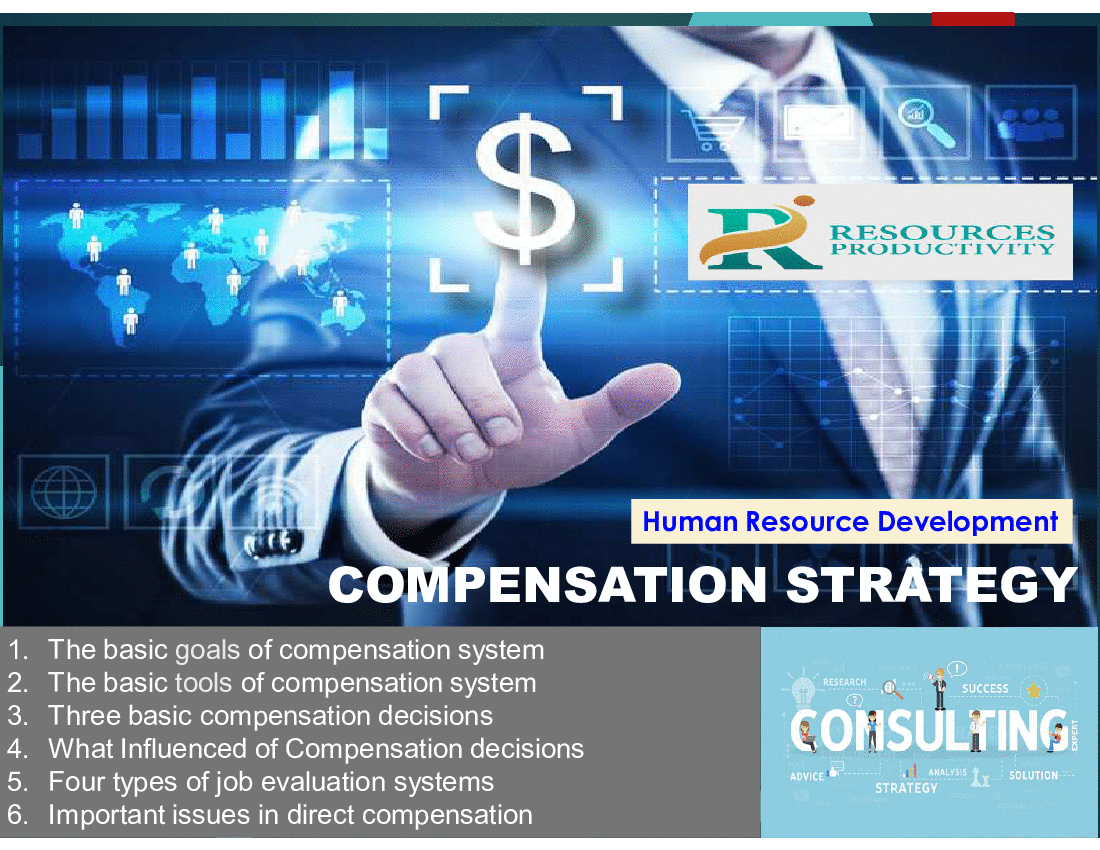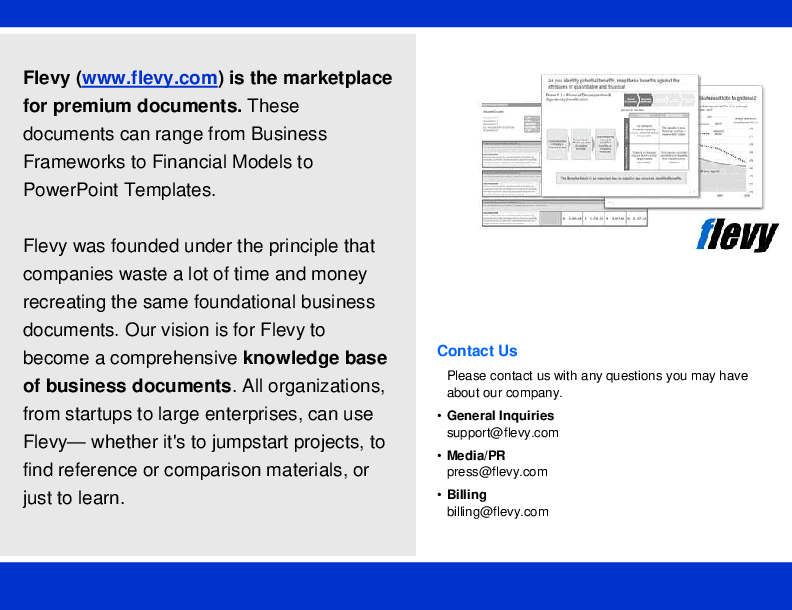HR Compensation Strategy (PowerPoint PPT Slide Deck)
PowerPoint (PPT) 20 Slides
BENEFITS OF THIS POWERPOINT DOCUMENT
- Provide a framework of compensation & benefit strategy
- How can compensation & benefit strategy make your organization achieved your goal
- How can compensation & benefit strategy to attract and retain best talent
HUMAN RESOURCES PPT DESCRIPTION
Compensation includes topics in regard to wage and/or salary programs and structures, for example, salary ranges for job descriptions, merit-based programs, bonus-based programs, commission-based programs, etc. (Also see the Related Info (including Benefits).)
Compensation is payment to an employee in return for their contribution to the organization, that is, for doing their job. The most common forms of compensation are wages, salaries and tips.
Compensation is usually provided as base pay and/or variable pay. Base pay is based on the role in the organization and the market for the expertise required to conduct that role. Variable pay is based on the performance of the person in that role, for example, for how well that person achieved his or her goals for the year. Incentive plans, for example, bonus plans, are a form of variable pay.
Employee benefits typically refers to retirement plans, health life insurance, life insurance, disability insurance, vacation, employee stock ownership plans, etc. Benefits are increasingly expensive for businesses to provide to employees, so the range and options of benefits are changing rapidly to include, for example, flexible benefit plans.
Benefits are forms of value, other than payment, that are provided to the employee in return for their contribution to the organization, that is, for doing their job. Some benefits, such as unemployment and worker's compensation, are federally required. (Worker's compensation is really a worker's right, rather than a benefit.)
Prominent examples of benefits are insurance (medical, life, dental, disability, unemployment and worker's compensation), vacation pay, holiday pay, and maternity leave, contribution to retirement (pension pay), profit sharing, stock options, and bonuses. (Some people would consider profit sharing, stock options and bonuses as forms of compensation.)
You might think of benefits as being tangible or intangible. The benefits listed previously are tangible benefits. Intangible benefits are less direct, for example, appreciation from a boss, likelihood for promotion, nice office, etc. People sometimes talk of fringe benefits, usually referring to tangible benefits, but sometimes meaning both kinds of benefits.
This PPT dives into the intricacies of individual pay determination, addressing key factors like performance and seniority. It also examines the impact of external influences such as labor market conditions, cost of living, and government regulations on compensation decisions.
Got a question about the product? Email us at support@flevy.com or ask the author directly by using the "Ask the Author a Question" form. If you cannot view the preview above this document description, go here to view the large preview instead.
Source: Best Practices in Human Resources, Compensation PowerPoint Slides: HR Compensation Strategy PowerPoint (PPT) Presentation Slide Deck, UJ Consulting
This document is available as part of the following discounted bundle(s):
Save %!
HR Strategy for Competitive Advantage
This bundle contains 3 total documents. See all the documents to the right.
Save %!
HRM Best Practices
This bundle contains 3 total documents. See all the documents to the right.
Save %!
Become a HR Retention Strategy Expert
This bundle contains 9 total documents. See all the documents to the right.
Save %!
HR Strategy In Hypercompetitive Business
This bundle contains 7 total documents. See all the documents to the right.
Save %!
Complete HRM Best Practices (Strategy & Operations)
This bundle contains 15 total documents. See all the documents to the right.
Save %!
Strategic Human Resource Management
This bundle contains 21 total documents. See all the documents to the right.







